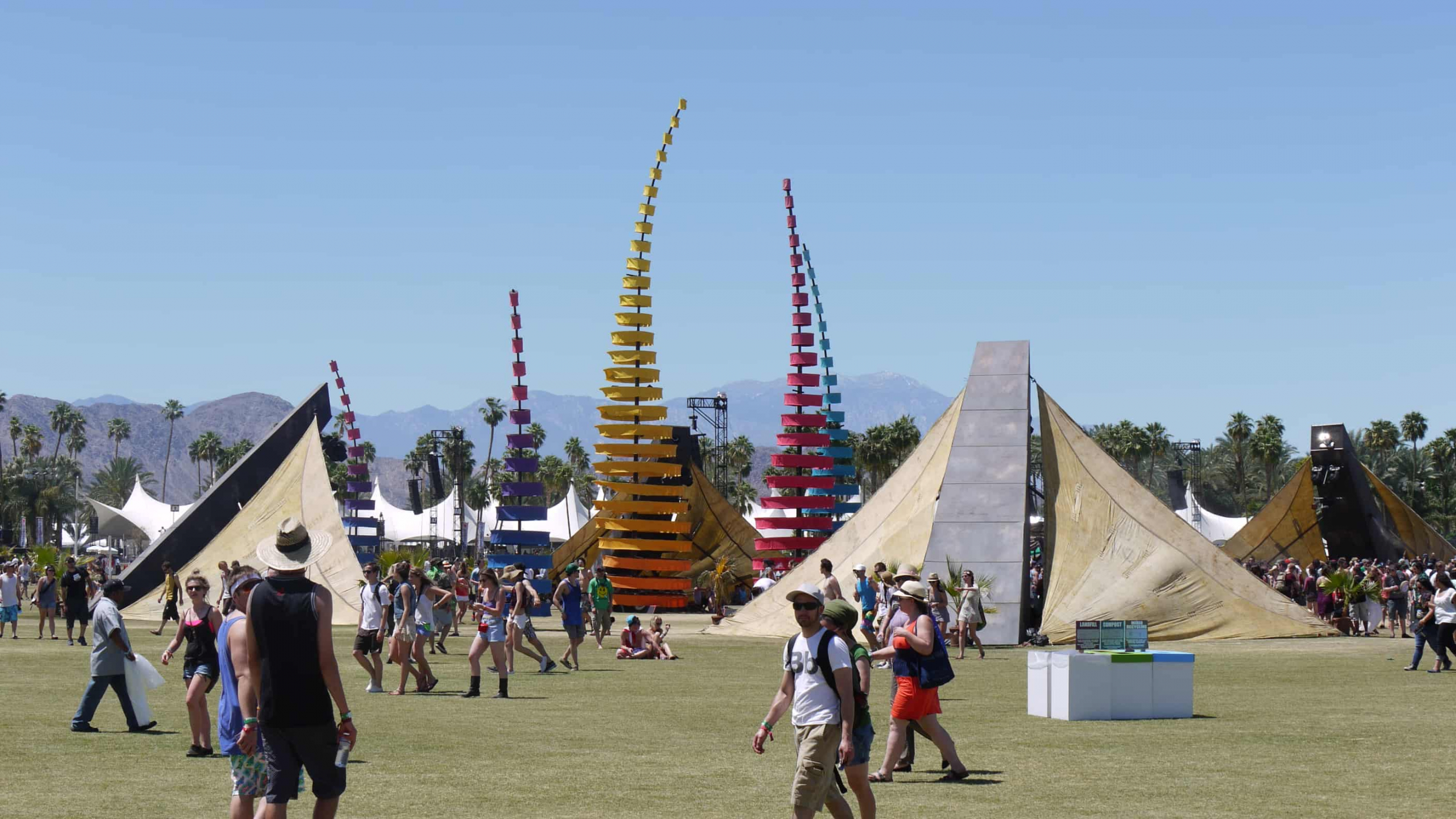Sitting cross-legged in the dry, dirt-covered grass, my friends and I, along with other music-lovers, waited to hear The Killers — a band that spawned dance-inspired American classics over the last dozen years. We were near the main stage, the closest we’d get that weekend in Oro-Medonte, a town between Barrie and Orillia. The final day of facing heat, exhaustion, and constant dehydration had arrived. Nostalgia-seekers had shelled out $500 or more to hear Brandon Flowers shout to a crowd that would have otherwise filled nearly every seat in the Rogers Centre.
Excitement refused to dwindle from the previous nights, which saw the same stage stomped on by LCD Soundsystem and Arcade Fire – two other bands that defined a generation. The three made up the headliners of WayHome, a music festival in its sophomore year. Drawing in a reported 40,000 attendees this year, many festival-goers sought to satisfy their wanderlust by camping under the steamy summer sun.
It is interesting, however, that we rarely consider the long-term impact of music festivals after the tents are packed and the bands go home for the year. Fast-forward to today, weeks after the event, numerous patrons who had previously lounged around their tents, sipping on beers or finding refuge in the shade underneath cars, are battling cold-like symptoms or worse.
For those who consider the immediate side effects of summer music festivals such as WayHome to be worth it, attention should also be paid to the impact of festivals on a grander scale.
Firstly, the economic impact of music festivals is considerable. The American leg of the Bonnaroo festival annually lures over 80,000 concert-goers to Manchester, Tennessee. In 2012, the city saw an indirect contribution of $51.1 million to the state, with $27.2 million brought to Coffee Country’s business. Jobs flourished and businesses witnessed soaring revenues due to the burgeoning impact of festival buzz. NXNE boasts that its 2014 festival brought $55 million to the City of Toronto. More centralized festivals such Field Trip, TIME Fest, and the Toronto Urban Roots Festival regularly bring in cash.
[pullquote-default]For those who consider the immediate side effects of summer music festivals such as WayHome to be worth it, attention should also be paid to the impact of festivals on a grander scale.[/pullquote-default]
This is not to mention the reasons why people seek out festivals in the first place. Thousands will gather to escape from the real world, indulging in choral harmonies that demand all our energy. At WayHome, pushing through minor setbacks in the form of security lapses and drunken buffoonery, it was clear that the weekend was one to make memories. Memories of the spinning disco ball behind an aged James Murphy, or the mistakenly-but-appropriately-delayed fireworks during Arcade Fire’s encore of “Wake Up,” are memories that festival-goers are unlikely to forget soon.
As an attendee, without considering the cons of WayHome, all that I could see while at the festival was the illuminated faces of those whose dreams were coming true.
But while WayHome hit the right notes by scheduling a strong lineup, creating gorgeous stages, and featuring non-musical attractions, it also lacked in some areas. If you are not a fan of poutine, pulled pork sandwiches, or Molson beer, there was not much else to live off of for the entire weekend. Attendees were forced into opting into RIFD wristbands, a cashless system that came with a processing fee. Showering was expensive, water stations were scarce on certain days, there were no recycling bins to be seen, and security would change their policies at the gate without advance notice to festival-goers. None of these things appear on Instagram feeds or Snapchat stories, but they do culminate in unpleasant experiences for many festival-goers.
Driving the pegs for the tent down into the rocky soil was the first challenge of the weekend, yet this and other minor inconveniences are nothing compared to the more meaningful issues behind festivals like WayHome.
I would learn only later that ancestors of the Huron-Wendat Nation had used the same site at Burl’s Creek up until 1650, where villages and burial sites were once present. A protest I had heard about only after everything had wrapped brought to light this controversy of organizers using sacred First Nations land. WayHome organizers had allegedly used more than the permitted 92 acres to operate the festival, which resulted in fines of $200,000 last year alone.
[pullquote-default]WayHome organizers had allegedly used more than the permitted 92 acres to operate the festival, which resulted in fines of $200,000 last year alone.[/pullquote-default]
Members of grassroots group Save Oro strongly oppose music festivals using this land, believing some degree of archaeological investigation should be required before any special events are held. The Ministry of Tourism, Culture and Sport have also weighed in, stating in a letter dated May 19, 2016, to the Township of Oro-Medonte that, “Temporary uses such as overnight camping, parking, concession booths…pose risks to potential archaeological sites.”
Local residents of Oro-Medonte and members of West Oro Ratepayers Association also stood in solidarity with the Huron-Wendat Nation, claiming any construction would degrade the environment, bringing in traffic, noise pollution, and rowdiness within the community. They weren’t wrong. The township received close to one hundred phone calls of complaints over the course of the weekend, many made by the same citizens.
Festival impact on the surrounding community certainly requires thorough examination, but unearthing the controversies behind music festivals ensures that things get even murkier than the mud on the fields. It is evident that a tremendous amount of people are disappointed by these operations, and for good reason. Yet, with the increasingly popular trend of music festivals bound to reach new heights in 2017, only one thing is certain – the show will go on while there is money to be made.
Shaq Hosein is a fourth-year student at St. Michael’s College studying English and Cinema Studies. He is The Varsity’s Video Editor.


